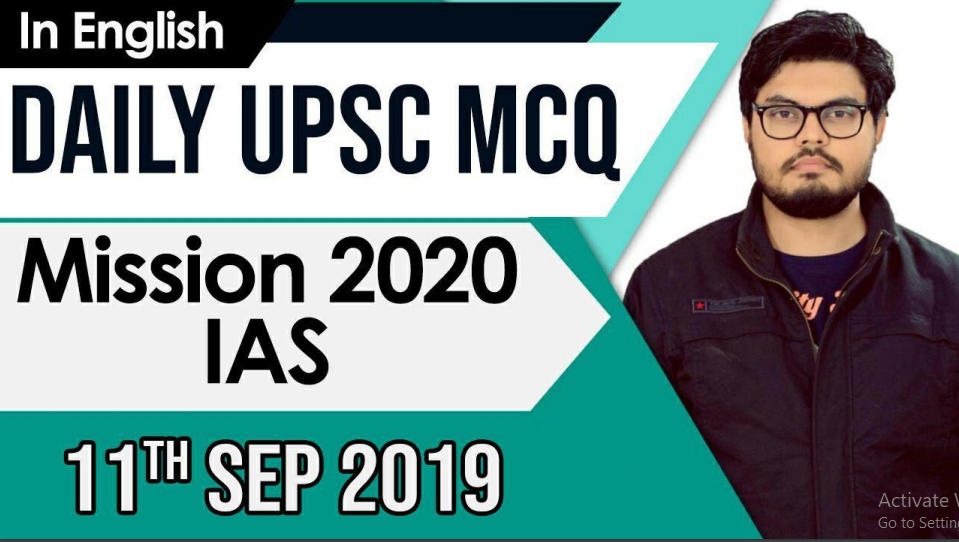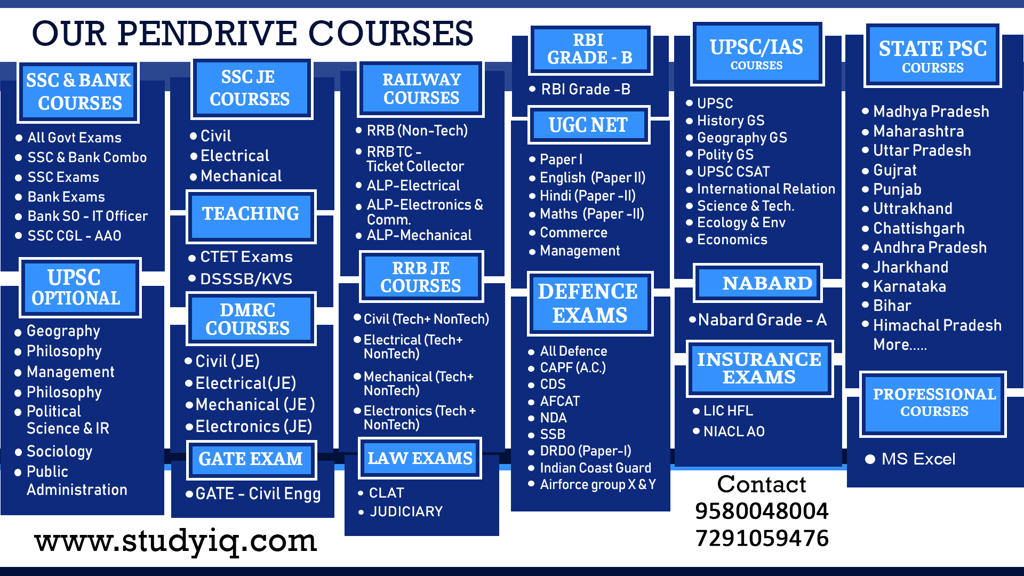MCQ 1
- African Swine Fever is a viral disease in some tribal groups of Africa
- It’s a zoonotic disease that spreads from pigs to humans through pork eating
Choose correct
(A) Only 1
(B) Only 2
(C) Both
(D) None
- ASF outbreak has been sweeping through swine populations in China, leading to massive mass cullings and a subsequent increase in the price of the country’s favourite protein.
- ASF has been seen in other Asian countries as well. Most recently, the Philippines had to cull more than 7,000 pigs to arrest the spread of ASF.
- ASF is a highly contagious and fatal animal disease that infects domestic and wild pigs, typically resulting in an acute form of hemorrhagic fever.
- It was first detected in Africa in the 1920s.
- The mortality is close to 100 per cent, and since the fever has no cure, the only way to stop it spreading is by culling the animals.
- ASF is not a threat to human beings since it only spreads from animals to other animals.
- According to the FAO, “its extremely high potential for transboundary spread has placed all the countries in the region in danger and has raised the spectre of ASF once more escaping from Africa. It is a disease of growing strategic importance for global food security and household income”.
MCQ 2
- Since 2000, global malaria incidence and death rates declined by 36% and 60%, respectively.
- More than 90 percent of the deaths were in India & Pakistan, and over 60 percent were among children under 5.
Choose correct
(A) Only 1
(B) Only 2
(C) Both
(D) None
- Malaria exacts a massive toll on human health and imposes a heavy social and economic burden in low- and middle-income countries, particularly in Sub-Saharan Africa and South Asia. An estimated 219 million people suffered from the disease in 2017 and about 435,000 died. More than 90 percent of the deaths were in Africa, and over 60 percent were among children under 5.
- Malaria is caused by parasites transmitted by mosquitoes. Even in relatively mild cases, it can cause high fever, chills, flu-like symptoms, and severe anemia. These symptoms can be especially dangerous for pregnant women and young children who are experiencing the disease for the first time. Severe malaria can cause lifelong intellectual disabilities in children, and malaria’s economic impact is estimated to cost billions of dollars in lost productivity every year.
MCQ 3
- Project Bal Basera is for homeless and trafficked kids
- It is executed by NCPCR
Choose correct
(A) Only 1
(B) Only 2
(C) Both
(D) None
- Project Bal Basera
- ‘Bal Basera’ or a ‘Creche’ has been inaugurated for the welfare of Children of Construction Workers deployed at AIIMS Rishikesh.
- Project is being executed by ‘Central Public Works Department’ (CPWD), Ministry of Housing & Urban Affairs.
- CPWD has signed an MoU with CPWD OWA (Officers’ Wives Association), which shall run Bal Basera.
- The Creche shall accommodate about 35 Children.
- CPWD OWA, a socio cultural organization, is actively involved in the social welfare activities of weaker sections of society.
- It is providing monetary help to the families of CPWD employees in distress.
- It manages a large number of Bal Baseras and organizing health camps at construction sites, a day care centre.
- Central Public Works Department (CPWD)
- CPWD is a premier Central Government authority in charge of public sector works, came into existence in 1854.
- It fucctions under the Ministry of Housing and Urban Affairs.
- It is the prime engineering department of Government of India
- Its specifications and manuals are followed by local public works departments and engineering wing of other departments.
- It deals with buildings, roads, bridges, complicated structures like stadiums, laboratories, bunkers, border fencing etc.
- It has now grown into a comprehensive construction management department.
- It provides services from project concept to completion and maintenance management.
MCQ 4
- India ratified the UNCCD Convention on December 1996, the same year it was formed
- It is committed to a bottom-up approach, encouraging the participation of local people in combating desertification and land degradation.
Choose correct
(A) Only 1
(B) Only 2
(C) Both
(D) None
- United Nations Convention to Combat Desertification
- UNCCD was adopted in Paris on 17 June 1994 and ratified by 196 countries & European Union.
- India ratified the UNCCD Convention on December 1996.
- UNCCD called as “Mother convention” along with other 2 Conventions emerged at 1992 Rio Earth Summit. The other 2 are,
- United Nations Framework Convention on Climate Change (UNFCCC) and
- Convention on Biological Diversity (CBD). It is committed to a bottom-up approach, encouraging the participation of local people in combating desertification and land degradation.
- India takes over COP Presidency of UNCCD from China for next two years.
- Through hosting COP 14, India will highlight its leadership in navigating the land management agenda at global level.
- It will also provide a stage to mainstream sustainable land management in country’s national development policies.
- The key outcomes of COP 14 will facilitate in delivering convergence and synergies among the existing programmes in the field of agriculture, forestry, land, water management and poverty alleviation.
- It will cater the need to achieve the SDGs and focused vision of of Doubling the Farmer’s Income by 2022.
- The Conference is being attended by delegates from 197 parties comprising of,
- Scientists and representatives of national and local governments.
- Global business leaders, NGOs, gender-based organisations, youth groups, journalists, and faith and community groups.
- They will share their expertise and give an overview to achieve their goals at the Conference.
- The objective of the COP 14, accompanied with ‘Committee on Science and Technology’ (CST 14) and Committee to Review the Implementation of the Convention (CRIC 18) is to,
- Discuss on various issues of land such as sustainable land management, reversing land degradation, mitigating drought.
- Addressing sand and dust storms, linkages with gender, tenure, etc. and
- To guide the Convention as global and national circumstances needs change.
MCQ 5
- United Nations Peacekeeping was created in 1948
- It brings together the General Assembly, the Security Council, the Secretariat, troop and police contributors and the host governments in a combined effort to maintain international peace and security.
Choose correct
(A) Only 1
(B) Only 2
(C) Both
(D) None
- United Nations Peacekeeping was created in 1948.
- Its first mission involved the establishment of the UN Truce Supervision Organization (UNTSO), which served to observe and maintain ceasefire during the 1948 Arab-Israeli War.
- United Nations Peacekeeping helps countries torn by conflict create conditions for lasting peace.
- Peacekeeping has proven to be one of the most effective tools available to the UN to assist host countries navigate the difficult path from conflict to peace.
- Peacekeeping has unique strengths, including legitimacy, burden sharing, and an ability to deploy and sustain troops and police from around the globe, integrating them with civilian peacekeepers to advance multidimensional mandates.
- UN peacekeeping is a unique global partnership. It brings together the General Assembly, the Security Council, the Secretariat, troop and police contributors and the host governments in a combined effort to maintain international peace and security. Its strength lies in the legitimacy of the UN Charter and in the wide range of contributing countries that participate and provide precious resources.
UN Peacekeeping is guided by three basic principles:
- Consent of the parties.
- Impartiality
- Non-use of force except in self-defence and defence of the mandate.
Need
- Reform peacekeeping based on incentivization, innovation and institutionalization.
- Incentivise women peacekeepers. As of July 31, women peacekeepers constituted 6 per cent. There are 5,243 female peacekeepers, out of a total of 86,687 peacekeepers.
- Innovative options such as co-deployment of peacekeepers from different countries engenders a genuine spirit of partnership for peace and needs to be promoted.
- There is need for expansion of online initiatives to develop capacities of future commanders and managers so that they lead by example and raise awareness of UN standards of conduct among their personnel is another innovation that can be further promoted.
MCQ 6
- India has won global acclaim for its “Beat Plastic Pollution” resolve under which it pledged to eliminate single-use plastic by 2 nd October 2019.
- Big producers of plastics are facing the ban, while unorganized entities covered by the Extended Producer Responsibility clause continue with business as usual.
Choose correct
(A) Only 1
(B) only 2
(C) Both
(D) None
India’s efforts:
- India has won global acclaim for its “Beat Plastic Pollution” resolve declared on World Environment Day last year, under which it pledged to eliminate single-use plastic by 2022.
- Single-use plastic items will be banned in India from October 2, 2019
- The ubiquitous plastic has made humans so dependent that it is virtually impossible to live without it.
- The PWM Rules Amendment, 2018, omitted explicit pricing of plastic bags that had been a feature of the 2016 Rules.
- Waste plastic from packaging of everything from food, cosmetics and groceries to goods delivered by online platforms remains unaddressed.
- The fast moving consumer goods sector that uses large volumes of packaging, posing a higher order challenge.
- Lack of adequate infrastructure for segregation and collection is the key reason for inefficient plastic waste disposal.
- Small producers of plastics are facing the ban, while more organized entities covered by the Extended Producer Responsibility clause continue with business as usual.
MCQ 7
‘ANGAN’- International Conference, recently was organised. It is related to
- Children’s safety from trafficking
- Urbanization
- Energy efficiency
- Child mortality below 5 years of age
- ‘ANGAN’- International Conference on Energy Efficiency in Building Sector:
- The recently held international conference, ANGAN (Augmenting Nature by Green Affordable New-habitat), focused on Energy Efficiency in Building Sector.
- Organized by the Bureau of Energy Efficiency (BEE), Ministry of Power, Government of India in collaboration with GIZ under the Indo German Technical Cooperation.
- It’s aim is to provide a platform to deliberate on the interdependence between organizations, systemic sustainability and feedback loops for better resource efficiency.
Download Free PDF






















 WhatsApp
WhatsApp